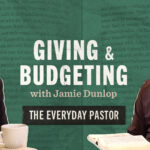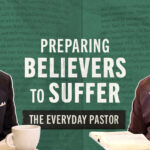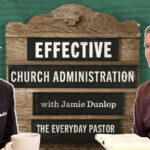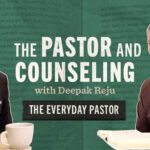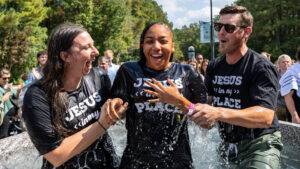Church planting is hard. Ever since the Book of Acts, it has stretched and exhilarated and exhausted those called to the work.
But church planting is also essential. If the gospel is going to spread, which it will (Matt. 16:18), then multiplying churches is vital to the mission (Matt. 28:18–20).
Every planter needs books—companions and guides for the journey. Whether thinking through philosophy of ministry or structures of polity or specifics of strategy, good literature can cast vision, steel resolve, and replenish empty tanks. But with so many books clamoring for your attention as a planter, it’s easy to feel overwhelmed. It’s not like you have much spare time.
What, then, should you pick up? I asked 20 pastors what three books every planter should read and why.
J. D. Greear

- Tim Keller, Center Church (Zondervan, 2012) [interview | excerpt]. There’s no single resource that engages the full range of questions church planters should be asking. But Keller’s magnum opus speaks with clarity on theology, preaching, revival, cultural engagement, and everything in between.
- Jim Cymbala, Fresh Wind, Fresh Fire (Zondervan, 2003). I pray we never lose the sense that God is real and moving in his church, and that he answers the fervant, faith-filled prayers of his people. We insult God not by expecting too much, but by expecting too little.
- John Piper, Let the Nations Be Glad (Baker Academic, 2010). God plants every church with his global mission in mind. Piper’s book paints the pictures and plots the path for seeing God’s glory spread to the nations. It will inspire each planter to make God’s global mission the heartbeat of his church from the outset. International ministry shouldn’t be something churches aspire to engage in down the road; it should be part of their DNA from the beginning.
- Honorable mention: Mark Dever, Nine Marks of a Healthy Church (Crossway, 2013). Planters need to be clear on what kinds of churches they’re planting. Dever adds staying power to any movement. Without good ecclesiology, fervency in planting can result in a lot of sound and fury, signifying nothing.
Pastor of The Summit Church in Durham, North Carolina
Tim Keller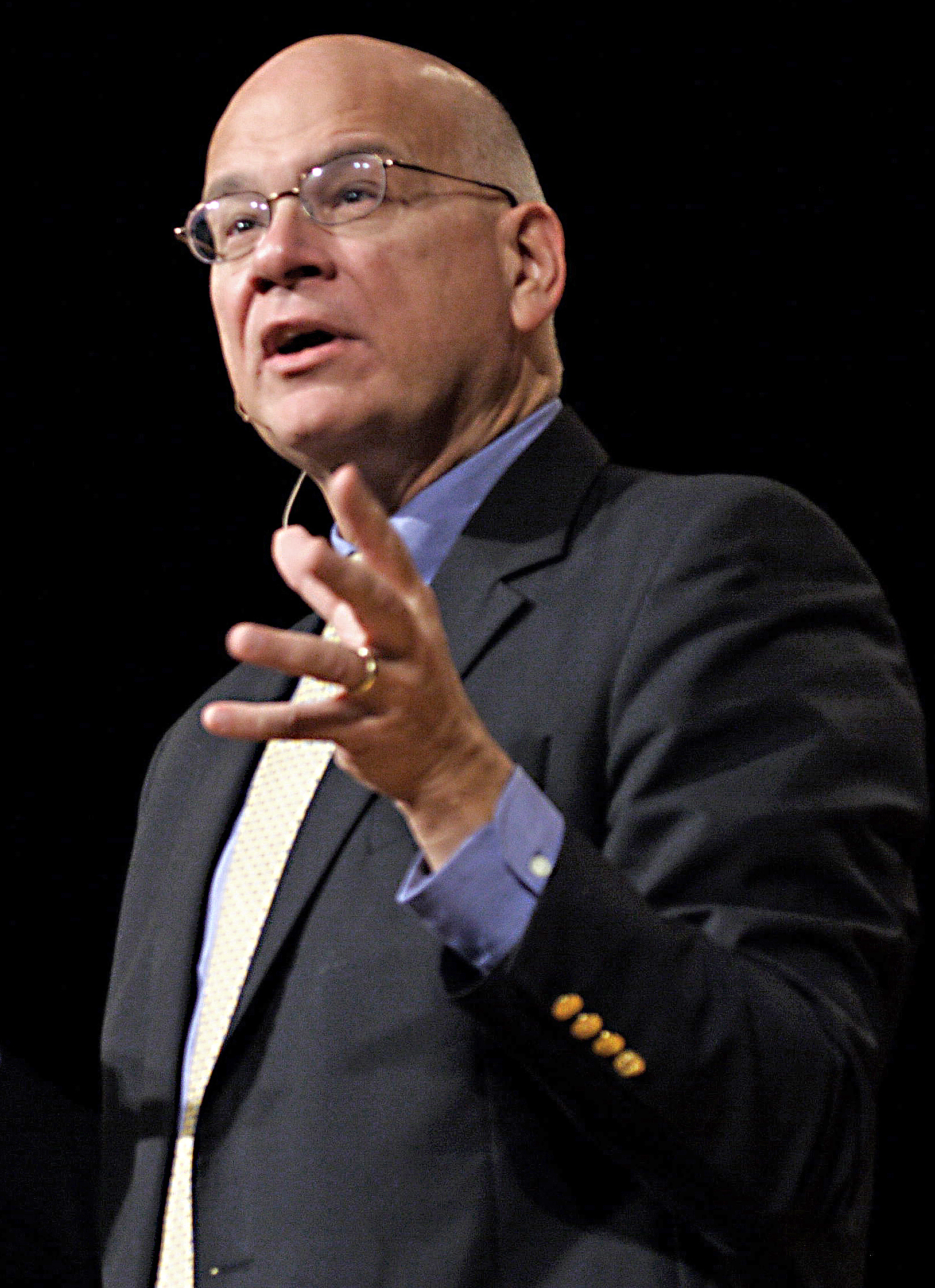
I would list just two books that I always recommend:
- Richard Lovelace, Dynamics of Spiritual Life (IVP Academic, 1979) [article]
- Michael Green, Evangelism Through the Local Church (Thomas Nelson, 1992)
I always recommend these because most church planters I’ve met haven’t read them or even heard of them, and they have too much important, practical material about what you do day to day to renew and win people with the gospel.
Pastor of Redeemer Presbyterian Church in New York City
Mark Dever
- Mike McKinley, Church Planting Is for Wimps (Crossway, 2010). Because Mike is honest about the trials and joys of church planting.
- Jonathan Leeman, Don’t Fire Your Church Members (B&H Academic, 2016). Because church membership is one of the most important and least understood issues among church planters.
- J. I. Packer, Evangelism and the Sovereignty of God (InterVarsity, 2012). Because you need to have a biblical grasp on the truth about evangelism.
Pastor of Capitol Hill Baptist Church in Washington, D.C.
Matt Chandler
- Darrin Patrick, Church Planter (Crossway, 2010)
- Paul Tripp, Dangerous Calling (Crossway, 2015)
- Charles Bridges, The Christian Ministry (Banner of Truth, 1958; first published 1830)
John Onwuchekwa 
- Richard Baxter, Dying Thoughts (Banner of Truth, 2004; first published 1691). People will die. It will be unexpected (coming sooner than you think and more often than you’d like), and your church will need to be comforted and instructed. All the books about vision casting, fundraising, and core team development will feel inadequate as you walk through the valley of the shadow of death. This book reminds us that death is nothing for the believer to fear. It also provides a great sense of urgency to remind us why we do what we do.
- Colin Marshall and Tony Payne, The Trellis and the Vine (Matthias Media, 2009). Probably the best book I’ve read on discipleship in the context of the local church. This book has a way of reorienting where you should be spending your time, effort, and energy as a pastor.
- Charles Spurgeon, Lectures to My Students (1875). I love everything Spurgeon writes and preaches. His lecture on the ministers’ “fainting fits” is worth the book’s weight in gold. Practical and warm wisdom for any pastor at any stage in ministry. In the first years of a church plant, this comprehensive resource seems invaluable.
Daniel Montgomery 
- Richard Lints, The Fabric of Theology (Eerdmans, 1993). A crucial book for a planter to start developing a holistic vision of how theology integrates with practice in a consistent and distinct manner.
- Zack Eswine, Preaching to a Post-Everything World (Baker, 2008). Preaching well and finding your voice is tough on a young planter, and this book is simply the best at growing a preacher into a more “hearable” communicator to our culture.
- Tim Keller, Center Church (Zondervan, 2012). You can’t miss this instant classic. The Redeemer Church Planter Manual was invaluable to me starting out, and now this volume replaces it for this generation.
- Ben Arment, Church in the Making (B&H, 2010). Unique among church planting books and filled with fresh insights, this is a humbling guide to seeing God at work in church planting in both our perceived successes and failures.
Eric Mason

- Eldin Villafane, Seek the Peace of the City (Eerdmans, 1995). This book is about developing a theology of peace, place, prayer, and people while ministering in a city. These categories helped me ask the right questions as I looked for them in the exegesis of my city and target area for planting.
- Paul Tripp, Dangerous Calling (Crossway, 2015). Church planting exposes who you really are and what’s healthy and unhealthy in your life. Whatever is unhealthy will only be magnified. Tripp exposes the surgical wounds of ministry throughout this book. Because he’s served hundreds of pastors, leaders, and churches, he speaks from both personal and professional experience about the dangers of how we relate to ministry. Dangerous Calling isn’t (in my humble estimation) a warning of the dangers of ministry, but a warning of our relationship with ministry. Church planters must be equipped on how to submit to the Lord in the process of planting. Tripp helps us prepare. God isn’t just working through us to plant a church; he’s also working in us the planting of the gospel.
- Ed Stetzer, Planting Missional Churches (B&H Academic, 2006). When I read this book, it was the best guide for developing my church plant prospectus. Stetzer does a great job focusing the planter on the journey of working through particular issues. I spent hundreds of hours between 2003 and 2005 using this work to formulate a biblically focused vision and practical strategy. It helped me and the leadership team know the basic options on working to get the church planted. It also helped me as a leader know how to get God’s people on the same page in the planting process. I recommend this book if you have a theologically rooted understanding of the church. This book will only help if that’s already in place.
- Lynn Anderson, They Smell Like Sheep (Howard Books, 1997). This book was a huge shock to me. The more I look at church planting preparation, the more I see that most planters are prepared to raise money, build and lead a team, cast vision, and be entrepreneurial and “missional.” Yet I see a grand deficit in how to shepherd and have a heart for those we reach. Anderson addresses this aspect of shepherding. The categories for shepherding in Scripture are lead, feed, care, know, and protect. Caring is the predominant form of shepherding, according to Anderson. Yet caring is almost an afterthought in church plant training. I’m convinced the problem isn’t that we push planters to catch people, but that we leave caring for people to osmosis. Passages like Ezekiel 34, John 10, and the pastoral epistles must make their way into our training.
Pastor of Epiphany Fellowship in Philadelphia, Pennsylvania
Darrin Patrick
- Ori Brafman and Rod Beckstrom,The Starfish and the Spider (Portfolio, 2008). Teaches the importance of building ministries on systems instead of just on yourself.
- Roland Allen, Missionary Methods (Eerdmans, 1962). Shows the necessity of apostolic impulse and dependence on the Holy Spirit to reach non-Christians instead of just gathering Christians.
- Ralph Moore, Starting a New Church (Baker, 2002). Shows the importance of ecclesiological flexibility along with the pragmatics necessary to start churches that reach emerging cultures.
Pastor of The Journey Church in St. Louis, Missouri
Stephen Um

- Tim Keller, Center Church (Zondervan, 2012). Keller describes the different types of church planting approaches that are theologically rooted in the Book of Acts. Especially helpful is his section on the different stages of church planting in which he discusses how the church planter needs to learn, love, link, and then launch.
- Harvie Conn, Urban Ministry (InterVarsity, 2010). This book is really helpful for an urban church planting leader who wants a robust understanding of contextualization in a changing cultural landscape.
- Alan Hirsch, The Forgotten Ways (Brazos, 2009). This book aims to “help restore Christianity’s original hard drive to its apostolic genius.” It focuses on the irreducible components and elements of a gospel DNA.
Pastor of Citylife Presbyterian Church in Boston, Massachusetts
John Starke

- James K. A. Smith, How (Not) to Be Secular (Eerdmans, 2014). If you can read Charles Taylor firsthand, great. But if you’re like most intelligent people, Taylor can be dense and difficult to grasp. That’s unfortunate, since Taylor seems able to blend the philosophical advancements of Alasdair MacIntyre’s After Virtue with the sociological interpretations of Robert Bellah’s Habits of the Heart into a wise and authoritative overview of our late-modern, disenchanted world. Thankfully, Jamie Smith has provided a helpful tool for engaging and using Taylor’s work. Smith guides us through Taylor’s explanation of how our late-modern world became “disenchanted” and how Christians can perhaps tempt our neighbors back toward belief and enchantment. This accessible book is worth reading and studying closely.
- Thomas Brooks, Precious Remedies Against Satan’s Devices (Banner of Truth, 1968; first published 1652). Maybe this is a surprising book to include for church planters, but I’ve discovered a goldmine of pastoral wisdom in Brooks. He understands the heart and temptation better than any other author I’ve found. He’s helped me toward better and deeper application in sermons and more careful guidance in counsel.
- Mark Dever, Nine Marks of a Healthy Church (Crossway, 2013). I’m tempted to put other books here. Tim Keller’s Center Church seems extremely important to read, or Tim Chester and Steve Timmis’s Total Church for refreshing missional challenges. But I’ve learned that basic and firm ecclesiology covers a multitude of sins. That doesn’t mean church planters should resist being imaginative and entrepreneurial in their hopes and plans. But like a human body, the church body needs clear structure, or there’ll be blood and guts everywhere.
Pastor of Apostles Church in New York City
Mez McConnell

- Steve Corbett and Brian Fikkert, When Helping Hurts (Moody, 2014). This book helps us rethink our categories when it comes to poverty and help. It challenges our Westernized way of “doing” mercy ministry, exposing our need for a whole worldview shift in order to engage with the issue in a more biblical way. Church planters today love social justice and mercy issues, but they should read this before embarking on any “program” in their ministry. Guaranteed to punch you in the gut.
- Jonathan Leeman, The Surprising Offense of God’s Love (Crossway, 2010). Simply outstanding. This book will challenge you, help you to think more clearly in terms of ecclesiology and practice, give you a greater understanding of God and his love, and deepen your love for the local church. It will make you want to be a better pastor to your people, and a better colleague to your elders.
- Jared Wilson, The Pastor’s Justification (Crossway, 2013). A wonderful book by a pastor who has been through the wars. Wilson challenges us to love the people we have rather than long for the church we want. You’ll be challenged to think through your motivation(s) for ministry and encouraged not to build monuments to yourself and your own ego (the not-so-secret idol of the church planter’s heart). Then comes the soothing balm of the gospel to give us a hug at the end.
Pastor of Niddrie Community Church and founder of 20Schemes in Edinburgh, Scotland
Anthony Carter 
- Colin Marshall and Tony Payne, The Trellis and the Vine (Matthias Media, 2013). The labors of the church require blending theology and practice for the good of people and ultimately the glory of God.
- Paul Miller, A Praying Life (NavPress, 2009). No exercise or discipline for the church planter is more important than prayer. Miller reminds us there are no big or small prayer requests, only a big God to whom we pray.
- John Flavel, The Mystery of Providence (Banner of Truth, 1963; first published 1678). No doctrine may prove more practically important in the life of church planters than God’s providence. Flavel offers a wealth of biblical inspiration in these pages.
Pastor of East Point Church in East Point, Georgia
Jonathan Leeman

While there are surely distinct dynamics and challenges the come with planting a church versus pastoring a long-standing one, it’s worth recalling that, most fundamentally, a “planter” is a pastor, and a “plant,” once a gathering serves the Supper, is a church. Therefore, every planting pastor, most importantly, should make sure he reads:
- Something on the nature and organization of the church. How this critical piece is strangely overlooked by so many planting pastors! Brother, labor to understand what Scripture says the church is and does. Read your standard ecclessiologies (Clowney and Bannerman for Presbyterians; Hammett and Allison for Baptists), but also books that focus on organization (Waters [review] and Hall/Hall for Presbyterians; Dever and Leeman for Baptists [review; interview]).
- Something on what it means to be a pastor. What kind of man should you be? What does it mean to shepherd? Charles Bridges’s The Christian Ministry is dense but profound. See also volumes by Laniak, Witmer, Rinne, Newton/Schmucker, Anyabwile, and Merkel.
- Something on how to preach. If you don’t do anything else when you plant a church, prepare excellent sermons. People are born again and grow through God’s Word. I like the preaching books by Stott, Lloyd-Jones, Helm, Keller [review; interview; 20 quotes], Dever/Gilbert, as well as volumes that connect preaching and biblical theology by Goldsworthy, Greidanius, Lawrence, or commentary series like The Gospel According to the Old Testament.
Editorial director of 9Marks; elder of Capitol Hill Baptist Church in Washington, D.C.
Ed Stetzer

- J. D. Payne, Apostolic Church Planting (InterVarsity, 2015). Payne, who serves as church planting leader at David Platt’s former church, provides a helpful look at planting that raises up new believers and deploys them in planting more churches.
- Craig Ott and Gene Wilson, Global Church Planting (Baker Academic, 2011). There are lots of quick “how to” books, but a compressive volume like this will help set a strategic missiological foundation.
- Jeff Christopherson, Kingdom First (B&H, 2015). Jeff presents a model and approach that empowers church planting but also pushes us toward a movement.
Executive director of LifeWay Research; teaching pastor of Grace Church in Gallatin, Tennessee
Anthony Moore 
- Richard Sibbes, The Bruised Reed (Banner of Truth, 1998; first published 1630). For the care of Christ’s body. Sibbes will provide a theology of suffering for both the church planter and his members.
- Jonathan Leeman and Mark Dever, Baptist Foundations (B&H Academic, 2015). For the structure of Christ’s body. Since you’re planting a church, you need this book in order to understand how the church operates and governs itself.
- Steven Smith, Recapturing the Voice of God (B&H Academic, 2015). For the exhortation of Christ’s body. This book provides a theological method for interpreting and preaching a text.
Campus pastor of The Village Church in Fort Worth, Texas
Steve Timmis

- Dean Fleming, Contextualization in the New Testament (InterVarsity, 2005). For some, contextualization is the bogeyman of contemporary mission to be avoided at all costs. For others, it’s a mere click away from syncretism pursued relentlessly. Any form of church planting is an act of contextualization. The only question is whether it’s good or bad. This book tackles this critical issue in a robust and biblical manner with theological richness that is both rare and refreshing. He helps us understand why contextualization is not making the gospel relevant but showing its relevance in any and every context.
- Leonard Verduin, The Reformers and Their Stepchildren (Baptist Standard Bearer, 2001). Reading church history isn’t an indulgence but a necessity if we are to better understand our own times and know how to navigate “new” issues. Our world is increasingly hostile to the gospel. How do we plant churches and conduct ourselves as gospel ministers in a world that despises us? Verduin takes a look at a maligned group of outsiders and shows their faithfulness to Christ in the face of often brutal opposition. He cites specific terms of abuse used by opponents to disparage these believers and shows how they exposed a critical misunderstanding of the gospel and the church. It is essentially a book about ecclesiology, and there are few things as pressing as knowing what the church is if you want to plant one!
- Leon Morris, The Apostolic Preaching of the Cross (Eerdmans, 1955). Every church planted needs to be formed by the gospel if it is to understand that it exists for the gospel. However that gospel is communicated, it needs to be the apostolic gospel. Morris takes us through key theological terms and, with the precision of a seasoned scholar, unpacks their meaning and significance. Like Paul, church planters must be determined to know nothing except Jesus Christ and him crucified (1 Cor. 2:2). This book will help ensure the crucified Christ we preach as the centerpiece of our mission is the Christ of the New Testament, rather than a culturally modified one.
Executive director of Acts29 Network; pastor of The Crowded House in Sheffield, England
Mike McKinley

- Mark Dever, Nine Marks of a Healthy Church (Crossway, 2013). One of the foundational decisions facing a church planter is: will I be guided by pragmatism (what seems to work) or by fidelity to biblical principles of church life (even if they don’t seem evidently “successful”)? If you decide on the latter (and I hope you do), this is a good primer on what those principles look like.
- Colin Marshall and Tony Payne, The Trellis and the Vine (Matthias Media, 2009). This book helps you focus relentlessly on the growth of the gospel in your church. It might even cause you to scrap plans for a bunch of ministries in your young church.
- Steve Timmis and Tim Chester, Total Church (Crossway, 2008). Focuses in on the way the community of the church holds out the gospel to the world. Practical with a unique perspective.
Pastor of Sterling Park Baptist Church in Sterling, Virginia
Russ Whitfield 
- Tim Keller and J. Allen Thompson, Redeemer Church Planting Center’s Church Planter Manual (Redeemer City to City, 2002). This is a fairly comprehensive, interactive workbook for church planters that provides lectures, outlines, essays, case studies, and worksheets that lead you through the many considerations involved in developing a philosophy of ministry and planting a church in an urban context.
- Christine D. Pohl, Living Into Community (Eerdmans, 2011). This wonderful book will encourage and instruct you in your efforts to build a healthy community that maintains a compelling, corporate witness.
- Charles Kraft, Anthropology for Christian Witness (Orbis, 1997). This volume is a veritable goldmine of cross-cultural insight that will help give the planter cultural self-awareness, an understanding of the dynamics of culture, an appreciation of the dangers of ethnocentricity, and a better sense of the ways in which culture and context can serve as instruments of gospel ministry rather than ends in themselves.
Pastor of Grace Mosaic in Washington, D.C.
Andrew Wilson 
My entire Christian ministry has taken place in churches of 500+, and I’ve never planted a church. But from all the people I know who have, I get the impression church planters have to do three things in particular. They have to (1) lead with courage, (2) contextualize with wisdom, and (3) pray with perseverance. So on top of all the good Christian books I’d encourage any believer to read, the three I’d suggest for church planters would be:
- Bill Hybels, Courageous Leadership (Zondervan, 2012). Yes, it’s a how-to book, and no, it’s not especially full of biblical teaching or gospel revelation. But as a call to give your life to serving the church, full of practical wisdom and exhortation, and some much-needed perspective from a seasoned leader, it’s hard to beat.
- Tim Keller, Center Church (Zondervan, 2012). I can’t think of a better manual for church planters. Almost any of its subsections could be made into a church planting book on its own and knock any of its rival publications into a cocked hat. The sections on culture and contextualization are particularly outstanding.
- Pete Greig, God on Mute (Baker, 2012). There are a lot of good books on prayer, but this one—better than any modern book I know—engages with the silence and frustration we can often experience as we wait for God to break through on our behalf. Put your concerns about Arminianism on hold and learn how to dig in for the long haul in prayer.
Pastor of Kings Church in Eastbourne, England
Lèonce B. Crump Jr. 
- Nelson Searcy, Launch (Baker, 2007). Although not theological per say, this is a practical “how to” on church planting. It helped me with regard to the nuts and bolts of getting a work off the ground. I revisit it often.
- Dave Ferguson, The Big Idea (Zondervan, 2007). This books challenges you to consider aligning Sunday mornings around a single message to maximize effect. It also shows a thoughtful approach to sermon series creation—something every young planter needs to sort out early, even if he only preaches expository series.
Pastor of Renovation Church in Atlanta, Georgia
Download your free Christmas playlist by TGC editor Brett McCracken!
 It’s that time of year, when the world falls in love—with Christmas music! If you’re ready to immerse yourself in the sounds of the season, we’ve got a brand-new playlist for you. The Gospel Coalition’s free 2025 Christmas playlist is full of joyful, festive, and nostalgic songs to help you celebrate the sweetness of this sacred season.
It’s that time of year, when the world falls in love—with Christmas music! If you’re ready to immerse yourself in the sounds of the season, we’ve got a brand-new playlist for you. The Gospel Coalition’s free 2025 Christmas playlist is full of joyful, festive, and nostalgic songs to help you celebrate the sweetness of this sacred season.
The 75 songs on this playlist are all recordings from at least 20 years ago—most of them from further back in the 1950s and 1960s. Each song has been thoughtfully selected by TGC Arts & Culture Editor Brett McCracken to cultivate a fun but meaningful mix of vintage Christmas vibes.
To start listening to this free resource, simply click below to receive your link to the private playlist on Spotify or Apple Music.








